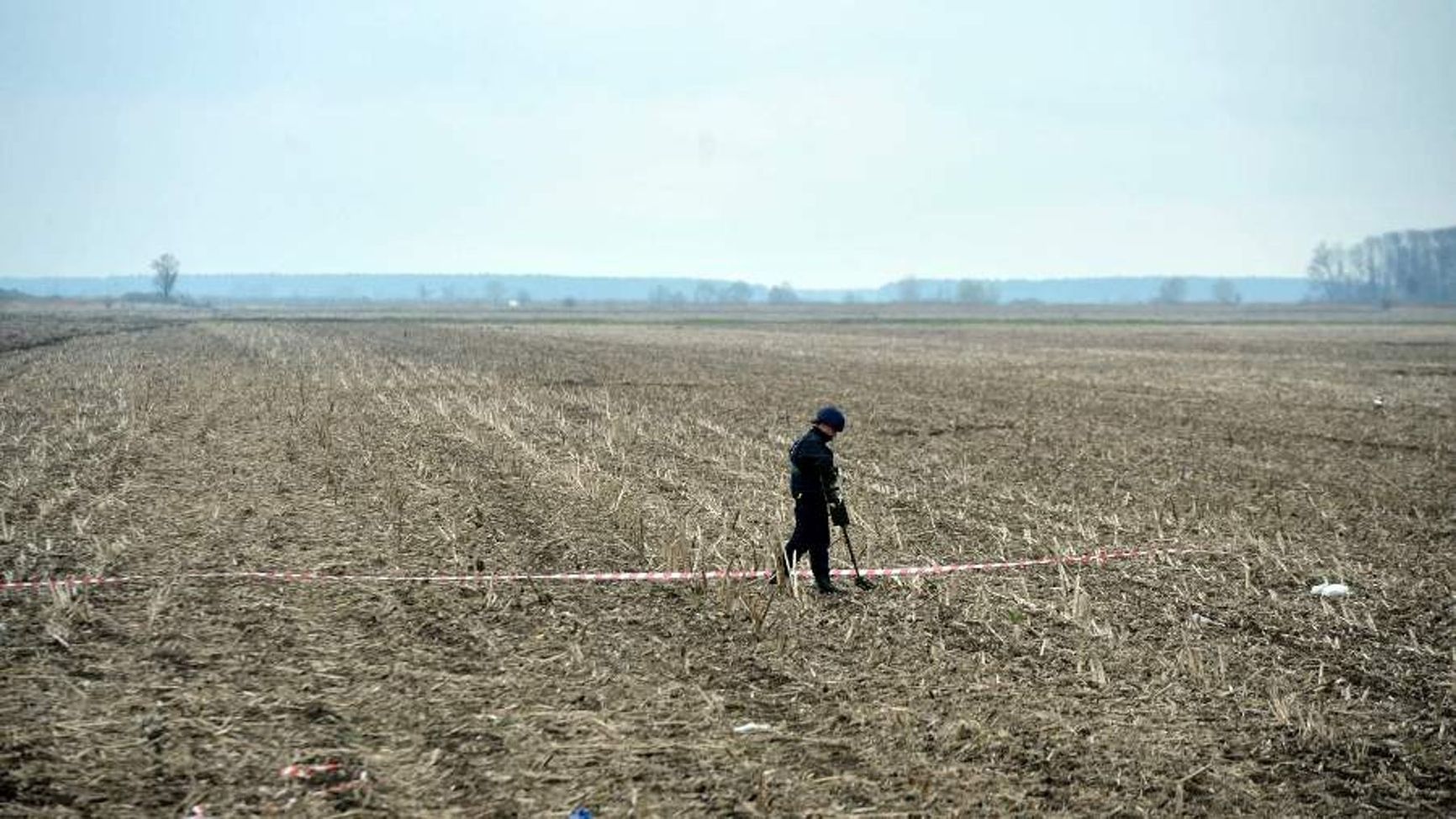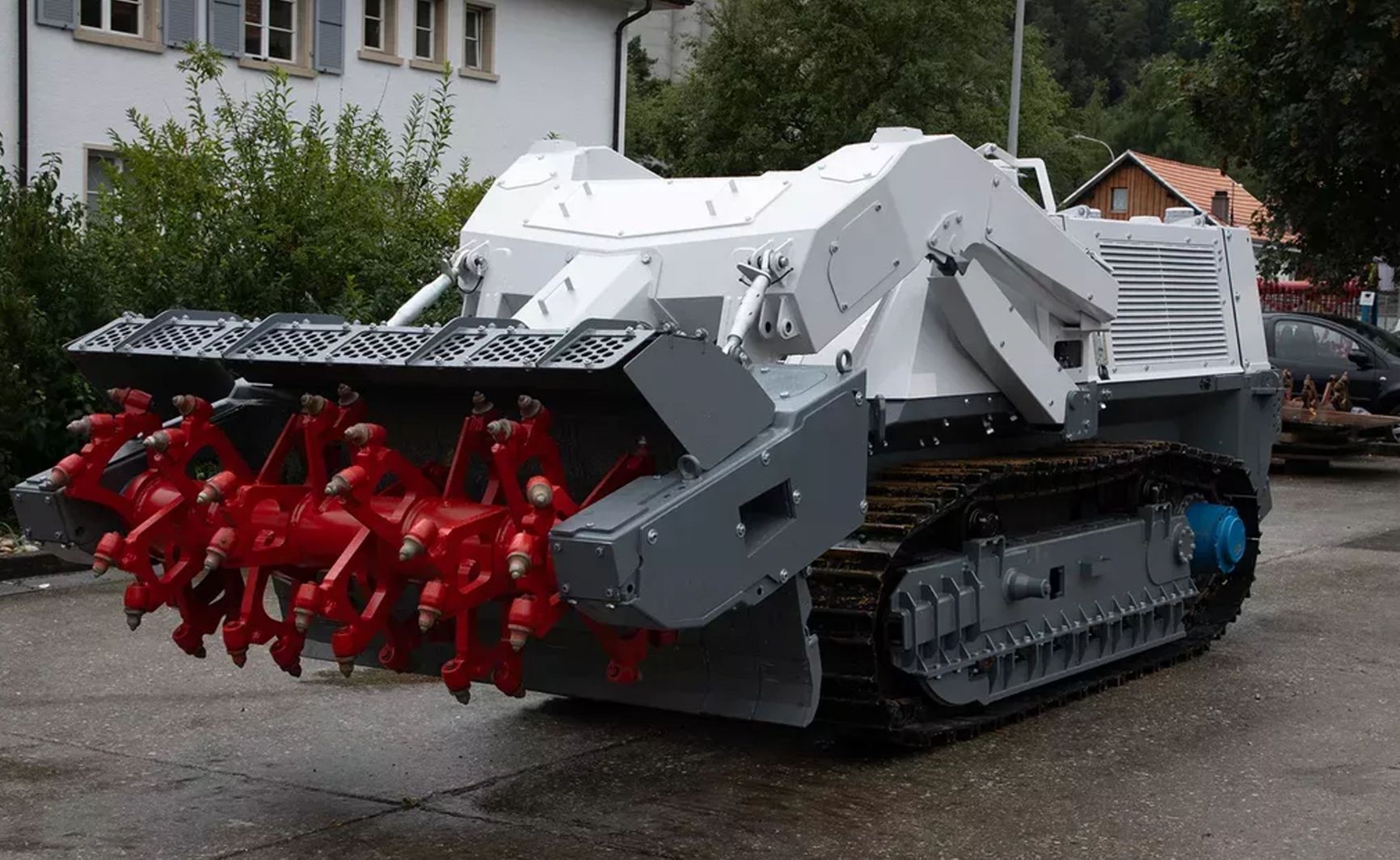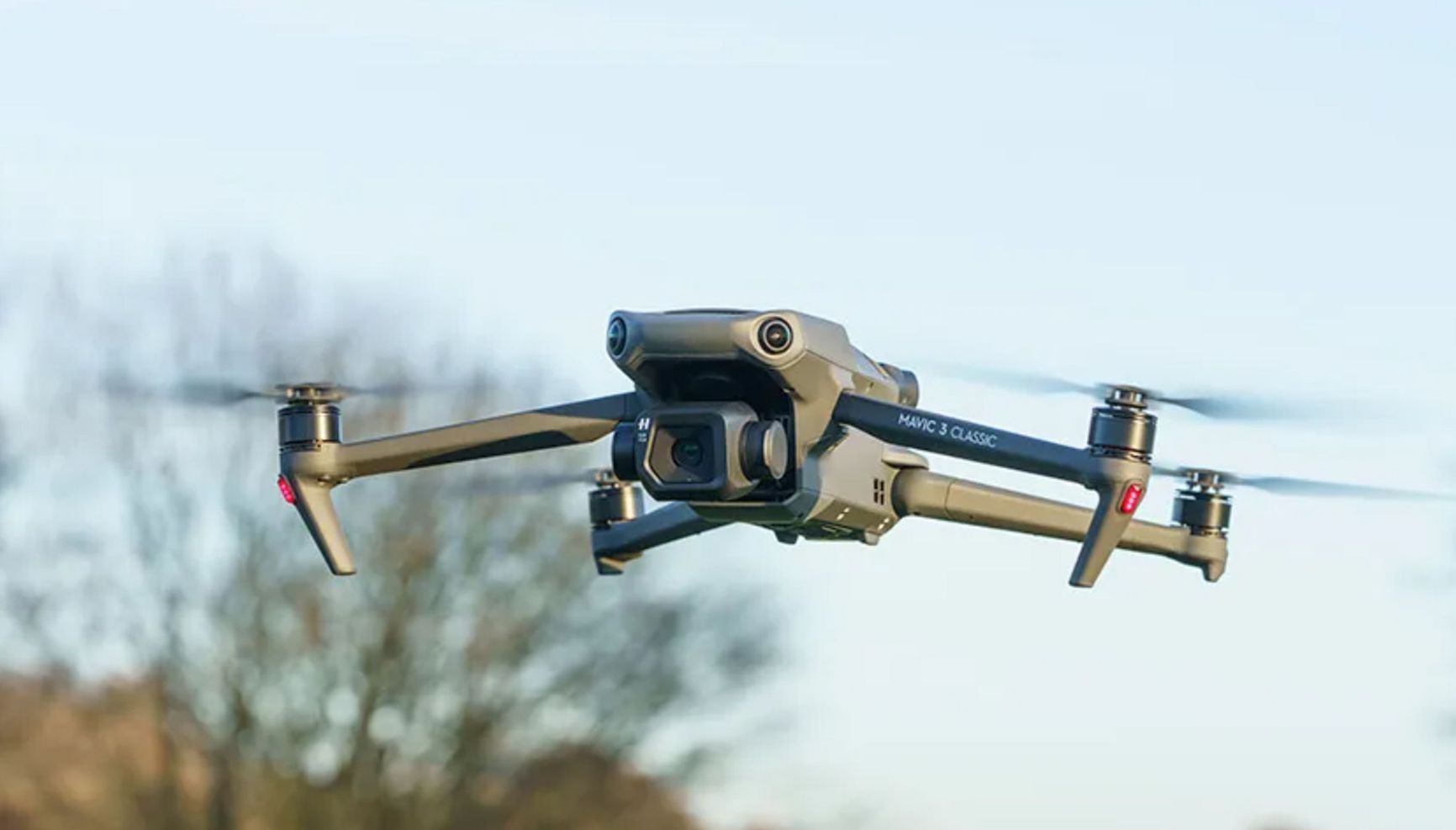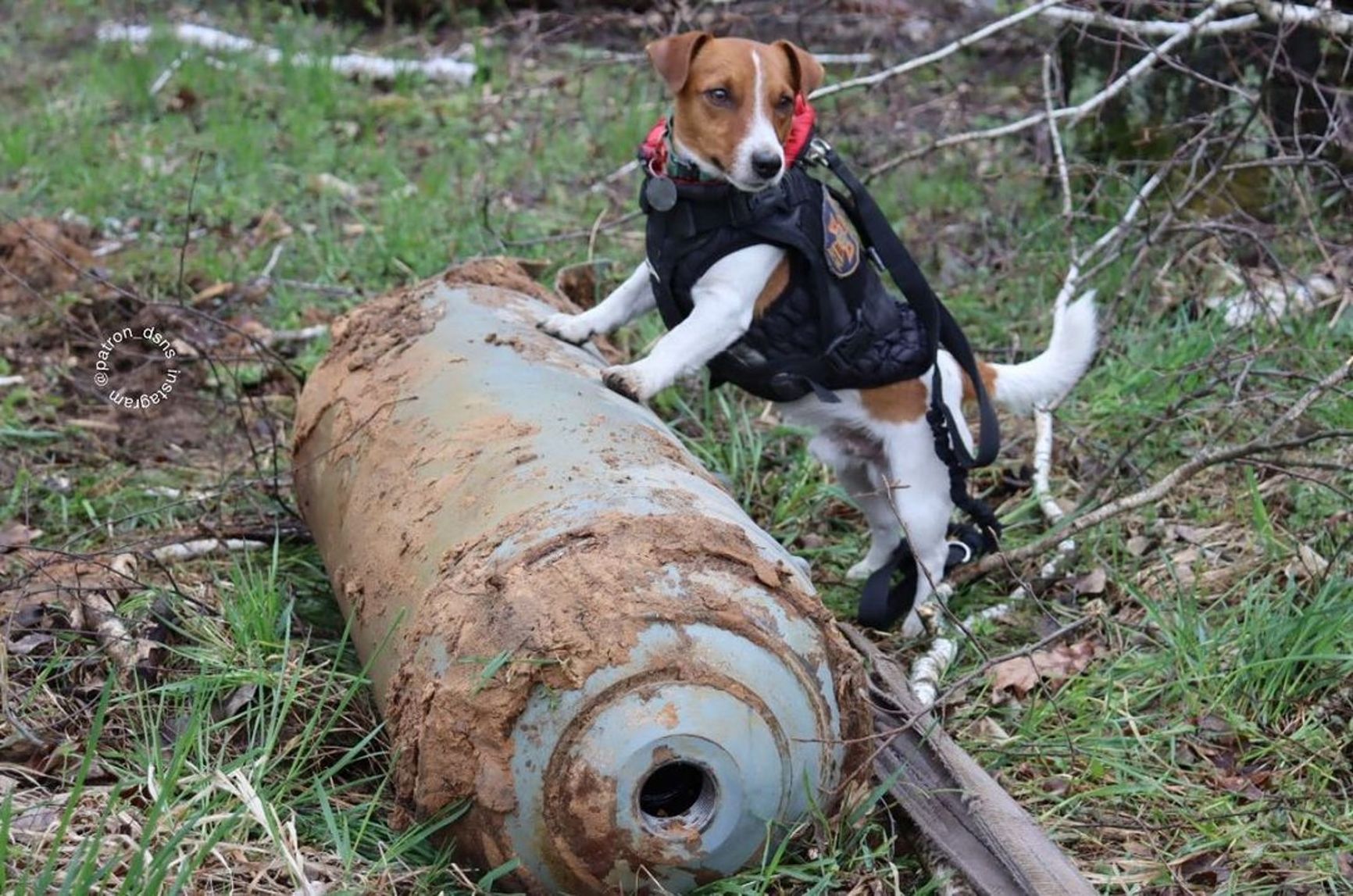

According to GLOBSEC, following the Russian invasion, Ukraine has become the world's largest mined territory, surpassing even Syria and Afghanistan in terms of contamination. Nearly a third of the country has been in the midst of intense battles and now requires extensive demining efforts. Daily reports of civilians losing their lives or limbs due to mine explosions have sadly become routine, while demining organizations struggle to keep up with the task. At the current rate, it would take approximately 750 years to completely clear the country of mines. Sappers are receiving support from modern remote-controlled equipment and, of course, dogs, some of which have already received recognition from the president.
Content
Seven centuries for demining
Attention to detail and domestic animals rigged with mines
Dogs to the rescue
Seven centuries for demining
On March 7, 2023, a resident of Snizhkivka village in the Kharkiv region was injured by an anti-personnel mine in his own yard. A month prior, a resident of Blahodatne village in the Kherson region stepped on a mine while taking a stroll through a field. In late February, in Davydiv Brod village in the Kherson region, a man had a portion of his leg severed while chopping wood in a forest. Shockingly, one month later, another resident of Hrygorivka village in the Kupyansk district was killed instantly in an explosion. These are just a handful of cases among many in various regions of the country, each affected to varying degrees by mines and unexploded ordnance as a result of the Russian invasion.
According to calculations by the prominent Central and Eastern European public analytical organization GLOBSEC, approximately 30% of Ukraine's territory (174,000 square kilometers) requires demining operations. Roman Prymush, the Deputy Head of the State Emergency Service of Ukraine (DSNS), went as far as to declare Ukraine as the most heavily mined country in the world. Timur Pistryuga, the head of the Ukrainian Sappers Association and director of Demining Solution, partially concurs with this assessment:
“Based on our statistics, the contamination rate is somewhat lower than what GLOBSEC has mentioned, but it remains significantly high. It encompasses 139,000 square kilometers of potential territory in need of demining. This includes areas that are temporarily occupied by Russian forces, and for us, this underscores the importance of conducting minimal surveys in these regions due to the substantial risk they pose to the civilian population.”

To clear such a vast expanse of territory will be a lengthy endeavor. Analysts at the GLOBSEC center assert that, at the current rate, it could take over 750 years for complete demining, while Ukraine's Minister of Economy, Yulia Sviridenko, estimates a more optimistic timeframe of around 70 years. Even under the most favorable projections, it will take decades before Ukraine's territory becomes entirely safe for its residents.
The demining process is not only time-consuming but also highly expensive. According to estimates from the World Bank, a staggering $37.6 billion will be needed to rid Ukraine of explosive remnants. Timur Pistryuga suggests that it might be achievable with $10 billion:
“If you were to travel the world and examine the cost of rendering one square meter of land safe, such as in Iraq or Syria, you would find that it exceeds one US dollar. If we apply these figures to the entirety of Ukraine's contaminated territory, the cost reaches into the billions. I believe this figure aligns closely with reality. Of course, we won't secure all of these funds within just one or two years.”
Surveying and demining of Ukrainian territory are carried out by the Armed Forces of Ukraine, units of the DSNS, the Ministry of Internal Affairs, the National Guard, and the State Transport Safety Service. Private initiatives, both domestic and international, are also involved. Notably, these include the British HALO Trust, the representation of the Danish Refugee Council in Ukraine (DRC), the Swiss charitable foundation FSD Ukraine, Norwegian People's Aid, Ukrainian Demining Solution, and others. These organizations primarily focus on humanitarian demining, where the foremost priority is the clearance of civilian infrastructure:
“Our guiding principle is to work in areas where accidents are most likely or where they are already occurring,” explains Alberto Serra, the manager of Norwegian People's Aid, who oversees the demining program in Ukraine. “Our paramount goal is to prevent civilian casualties at all costs, so humanitarian objectives take precedence. The military also participates in demining, but their primary aim is to secure the ability to advance their troops and engage the enemy.”
Serra notes that farmers are frequently victims of these explosions: “Current priorities are determined by the Ministry of Defense and the Ministry of Economy, and right now, the focus is on agricultural lands. Our imperative is to ensure that fields are safe and suitable for cultivating crops such as wheat, sunflowers, and others.”
Attention to detail and domestic animals rigged with mines
Norwegian People's Aid (NPA) is one of the world's largest organizations dedicated to humanitarian demining. They commenced their operations as early as 1992, working in Cambodia at that time. However, as Alberto Serra notes, in none of the African, Balkan, or Middle Eastern countries affected by armed conflicts have they encountered the scale of military aggression and types of ordnance they deal with in Ukraine:
“This is a conflict between two major armies, modern and organized, employing a wide array of different types of weaponry that we have not encountered before. We are aware that Russia is using new types of landmines, and Ukraine extensively employs NATO weapons not found in other countries.”
In Ukraine, there are nine NPA sapper groups, each comprising 72 individuals. Besides demining activities, the organization is also involved in educating the population about the risks associated with explosive materials and the rules for behavior in contaminated areas. Additionally, they employ drones to create precise maps of contaminated areas.
Timur Pistryuga confirms that the work has become more challenging and intense since the beginning of the full-scale invasion, primarily due to the scale of the war and the use of various new mining technologies. Additionally, a massive “buffer zone” has emerged where working is nearly impossible due to the high probability of recurrent contamination. This situation was not present before February 2022: “Conducting humanitarian demining in these areas under intense artillery shelling doesn't make much sense. When we complete work on one field, the next day, new munitions arrive, and we are compelled to start anew.”
Sappers have a multitude of tasks on their hands. In addition to mines and improvised explosive devices, unexploded ordnance is also present, each necessitating its unique approach. Mikhail Ilyev, the head of the pyrotechnic works unit at the State Emergency Service of Ukraine in the Chernihiv region, states that anti-personnel and anti-tank mines are most frequently encountered in contaminated areas:
“Numerous anti-personnel mines come in plastic or metal casings. Those encased in plastic are exceptionally hard to detect due to their minimal metal components, resulting in weak signals from metal detectors. The examination of anti-tank minefields is quicker, but when there's abundant vegetation, the use of a metal detector becomes exceedingly difficult due to a lack of a clear pathway.”
Sappers are assisted by specialized equipment when dealing with anti-personnel mines, some of which can be operated remotely. Nonetheless, Pistryuga says that this equipment does not entirely replace the need for human involvement:
“After the sapper vehicle, sappers still need to traverse the field using detectors. For instance, in a scenario involving the PFM-1 'Butterfly' landmine, a mine may fail to detonate and instead become buried in the ground, requiring manual inspection. Nevertheless, even in such situations, robots expedite the process.”

Switzerland has provided Ukraine with this remote demining vehicle
Regrettably, he emphasizes that the vehicle cannot access every area. In wooded regions, it lacks maneuverability, requiring manual intervention and risking encounters with tripwires:
“Anti-personnel mines like OZM-72 or hand grenades such as RGD-5 or F-1 can be rigged with tripwires. The shrapnel radius for anti-personnel mines and RGD-5 grenades can extend up to 35 meters, and for F-1 grenades, the shrapnel dispersion can span up to 200 meters.

F1 hand grenade
Another factor to consider is that stationary tripwires are at times concealed using camouflage thread. Detecting them is extremely difficult, as they are not detectable by devices, necessitating visual inspection. Experienced sappers possess the ability to approximate where such a grenade might be concealed. They scrutinize for telltale signs like broken tree branches, dried or trampled grass, or oddly positioned objects. Attention to detail is essential, particularly when we work manually with probes.”
Apart from probes, metal detectors, and a one-meter by one-meter large loop detector, which accelerates the demining process, overall, the procedure remains sluggish despite the capabilities of these devices, as Pistryuga explains.
Sappers are aided in their work by drones with high resolution, such as the compact Mavic 3. “On occasion, this expedites the process and helps us identify areas where we cannot deploy our sappers due to the associated risks. Drones capture imagery, providing us with insights into the positions of Russian occupying forces,” Pistryuga says.

A DJI Mavic 3 drone
“The greatest advantage of drones is the ability to easily extrapolate certain patterns,” adds Alberto Serra. “It's a way to structure the minefield, especially for anti-tank mines, which streamlines the clearance process. You can readily anticipate and predict the location of the next mine. However, this doesn't mean it will be the same everywhere; if the troops start retreating, they may choose different paths, and everything becomes chaotic.”
According to Mikhail Ilyev, the sappers do have protection, although it's not foolproof:
“When we arrive, we conduct reconnaissance initially, and during this, our team works in protective gear – including body armor and helmets. Additionally, we have special EOD-9 suits that provide full frontal protection for the sapper. The suit features armor designed to withstand shrapnel from anti-personnel mines, such as the OZM-72 or hand grenades. However, even with such a suit, one cannot be completely safe.”

The threat doesn't just emanate from the mines themselves, Ilyev says:
“No one is immune to being targeted near the front lines. Using drones, the sappers' locations are frequently pinpointed, and this can lead to artillery or aviation strikes, or even missile attacks, which are impossible to predict.”
After Russian forces withdraw from occupied territories, they often leave numerous traps, which sappers have to deal with. Virtually anything can be rigged with mines, including weapons and ammunition, food, and even the bodies of deceased soldiers, as has been reported by the media on several occasions.
Virtually anything can be rigged with mines, including weapons and ammunition, food, and even the bodies of deceased soldiers
Sappers from Ilyev's team have also encountered such traps:
“The Russian army plants various improvised devices in residential homes, apartments, and on private properties. These devices can be discovered on doors, inside washing machines, refrigerators, children's toys, cribs, and various household items. In some instances, even kitchenware has been rigged. The purpose is for these devices to detonate when someone opens or moves them. They have even booby-trapped domestic animals, resulting in their death or serving as a 'surprise.' This is all strategically planned, assuming that the owners will return to collect their dogs or cats, and that's when the explosions occur.”
Dogs to the rescue
In addition to specialized equipment, dogs assist sappers in demining areas. According to Alberto Serra, Norwegian People's Aid has 14 dogs at its disposal:
“I believe we are one of the few organizations that use dogs for humanitarian demining. We train and raise them ourselves. We use them in conjunction with sappers and machines. They usually work in pairs, meaning two dogs and two handlers. They can conduct inspections following a sapper or a machine, rapidly clearing the way. If you suspect contamination on a road that you can't access, the dogs can likely check everything. In a country like Ukraine, which has been under intense industrialization for many years, even centuries, there's a lot of metal in the ground, which hinders sappers. If you're searching for metal, you'd stop every five seconds, but dogs are trained to detect explosives, and metal won't deter them.”
Ukrainian demining organizations also employ dogs in their work. Jack Russell Terrier Patron, owned by Mikhail Ilyev, has become a national symbol of Ukraine in this war.
“Typically, Patron is by my side during demining, assisting with the work. However, there are instances when we leave him behind. For example, when we deal with tripwires in minefields, it's impossible for him to detect them by scent. Nevertheless, we include him in our operations involving anti-tank mines and at locations where primary field ammunition depots have been destroyed,” Ilyev explains.

Patron the Dog at work
patron_dsns/Instagram
Ilyev began training Patron to detect explosives when the dog was three months old:
“At the age of three months, we began attending training sessions with a professional dog handler. When Patron was approximately nine months old, we decided on initiating his training for explosive device detection. Initially, we introduced him to various forms of gunpowder and explosives. For instance, in the beginning, he learned to recognize specific explosive substances by scent. We would hide them from him and he would then search for them during training,. Initially, the dog handler strongly resisted training Patron – he primarily worked with larger breeds like Belgian Shepherds. However, we managed to convince him, and he put his faith in Patron and started training him.”
According to Mikhail, Patron and other dogs under the sappers' command have been exposed to loud noises from an early age and are no longer frightened by explosions:
“Dogs begin training at the age of two to three months. During this period, they get used to small explosions, and then they move on to larger ones when ammunition is being disposed of. I've witnessed such situations. During invasions in the Chernihiv region, bombs were dropped, artillery was firing, and regular dogs were in a state of shock, not knowing where to hide. But service dogs are already adapted to this. For example, I'm standing there, and Patron is right by my side, not panicking. He sees that his owner is nearby, and no one is running away, so everything is okay.”

Patron the Dog and Mikhail Ilyev
patron_dsns/Instagram
Patron the dog has earned the distinction of being the first canine to receive the Dog of Goodwill title from UNICEF. This recognition comes not only for his efforts in demining Ukrainian territory but also for his contribution to the emotional well-being of children.
Furthermore, Patron's image is utilized by various manufacturers of toys and human as well as pet food products. One such example is Collar, a pet product manufacturer, which has introduced an entire range of pet supplies under the brand HERRRO and has been allocating the proceeds from products featuring Patron's image to the UAnimals animal aid fund.
In May of the previous year, Ukrainian President Volodymyr Zelensky decorated Patron with the “For Loyal Service” medal.